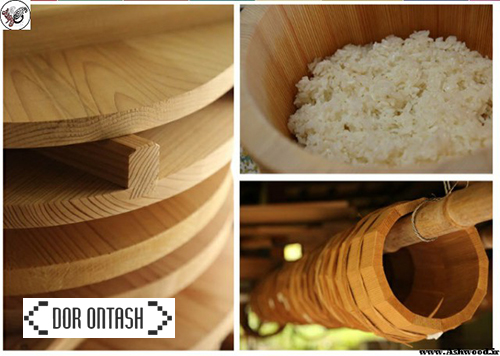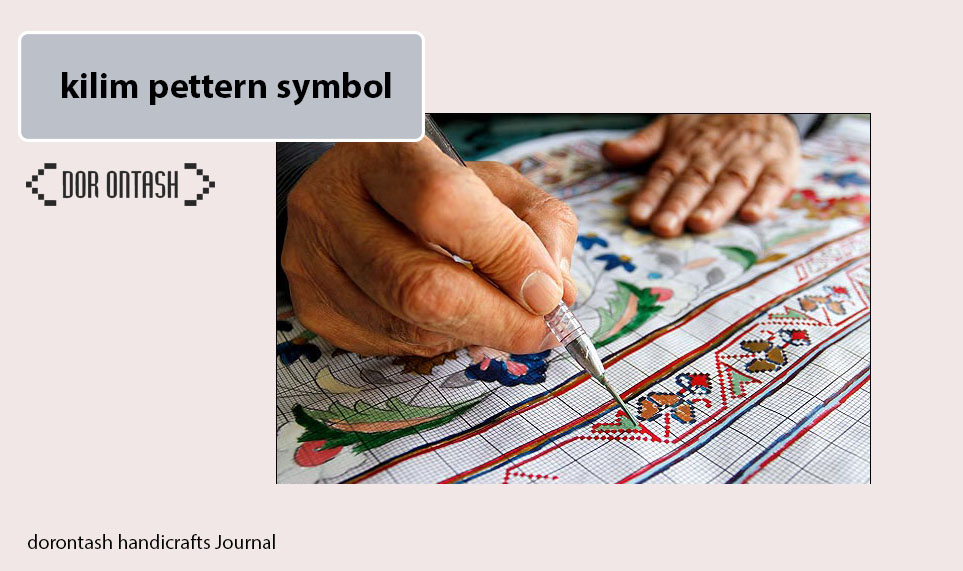If you are planning to travel to Japan, do not skip buying handicrafts of this country. From the past until today, Japan’s handicrafts have turned the world’s eyes towards them.
The country of Japan has spent years in isolation, but still, the handicrafts of the people of this country are unparalleled and exemplary in the world.
Many tourists visit Japan every year; One of the things that draws these people to Cheshmadami Island is the handicrafts and of course the rich history of this country. A place where handicrafts, festivals, events, and the like fascinate foreign tourists in Japan.
History of Japanese crafts
Japan consists of about 3000 islands, the largest of which are the four islands of Honshu, Hokkaido, Kyushu and Shikoku, the length of all the islands from north to south is nearly 1800 km, and its area is equal to 377,000 square kilometers.
With a population of 130 million people, Japan has the most advanced technology in various fields of industry and is considered one of the seven largest industrial countries in the world. Japan’s dominance in global markets has made the country’s export surplus over import in 1998 amount to 93 billion dollars and it is known as the most successful country in the field of foreign trade.
Before dealing with the handicrafts of Japan, it is not inappropriate to learn a little more about the features and characteristics of this country.
More than 75% of Japanese people live in cities, and migration from villages to cities continues to take advantage of more facilities, and this phenomenon has strengthened after World War II and intense industrial development.
Although Japanese art is a combination of Indian and Chinese art that came to this land through Korea, but at the same time, over time, it has acquired a Japanese color so that it is free from the monotony of Chinese art, and at the same time, it is decorated with more than It does not have the limit of Indian art.
Considering Japan’s artistic history and the stunning industrial progress of this country in recent decades, it should be accepted that there was no clear boundary between art and handicrafts in Japan, and if today we see many young people doing handicrafts, in They want to embody their feelings by this means.
The diversity and beauty of the various fields of Japanese handicrafts, which continue despite the ever-increasing development of the industry, such as ceramics, hand weaving, lacquer works, bamboo weaving, paper making, and making wooden and metal products are amazing. Of course, in the past, handicrafts were a legacy that was usually passed down from father to son, but now we see some young people who, regardless of their father’s profession, choose to do handicrafts as their profession. These people enter workshops with centuries-old production traditions with a completely new perspective and thinking.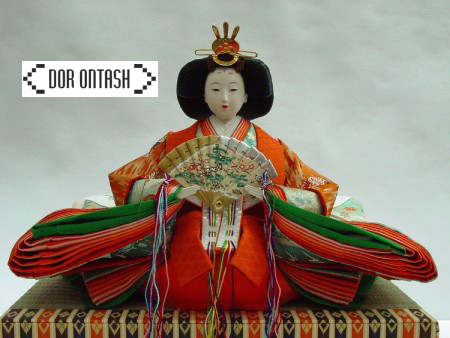
Another feature of Japanese handicrafts is that villagers also turn to handicrafts in the winter season after planting and before harvest (like in Iran).
Artisans learn these arts in workshops from childhood, and there is a belief among them that mastery cannot be achieved in any field of handicrafts in less than ten years. They are very satisfied and like their fathers, they work and strive without name or sign. They want nothing more than to provide life and respect from the employers who work for them.
History and characteristics of Japanese arts and crafts:
Japan is a small country, composed of four large islands and a number of small islands, located in the east of China and Korea. The inhabitants of Japan entered the Neolithic period (agricultural era) from around the seventh millennium BC. From this period, pottery and crystal ornaments have been obtained. The Japanese entered the urbanization period around 400 BC.
Despite the fact that Japan was strict against the entry of foreigners into the country, the civilizations of China, Korea and Buddhism played an essential role in the formation and evolution of Japanese culture and art . The materials and methods used by the artists, even the themes, had Chinese roots. In the 5th to 7th centuries AD, the Japanese got to know the artistic artifacts of West Asia (Central Asia, North India and Iran) through the Silk Road. For example, Sasanian motifs were also imitated in Japanese fabrics.
A significant number of objects from the Sasanian period are still kept in one of the royal treasuries. Along with the beliefs of their ancient religion, Shinto, Japanese artists also benefited from Buddhism and Chinese Taoism. The characteristics of Japanese art show that most of these imitations are conscious and Japanese artists have adapted foreign achievements well to their traditions and added elements to it.
The Japanese like the Chinese are fascinated by nature, but their view of nature is mixed with sentimentality. In general, in Japanese art , sensitivity to texture, emphasis on technical points, interest in bright colors, catchy composition and effort for decorative effect are more visible. , but they are also capable of making glazed earthenware, wooden objects, embossing, weaving and making metal and wooden objects and statues and decorations inside and outside buildings.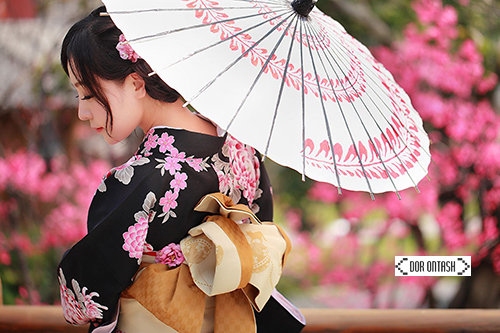
Sculpting:
Due to their volcanic nature, Japanese islands do not have suitable stone for sculpting and carving, so they used clay, wood, and metal for sculpting. The first clay figurines from the fourth millennium BC, from the Neolithic era, often have a mat-like and interwoven design.
The art of Mfar Ghakari came to Japan from China in the first century AD. On the bronze bells of this period, simple lines and images or low-embossed designs can be seen. Then, in the 4th to 7th centuries AD, there were clay cylinders around the tombs, on top of which Haniva 1 statues were placed in the form of humans, animals or birds.
Before the arrival of Buddhism through Korea in 552 AD, statuary was not seriously discussed in Japan. Korean artisans went to Japan with Buddhist monks and taught the Japanese how to make Buddhist statues. The first Buddha statues, which were made in the 6th and 7th centuries AD, are derived from the Greek Buddhist art of the 1st to 3rd centuries AD Gandhara (Kandahar) and have a realistic style. Some of the works of this period are among the most exquisite and effective religious statues in the world . Some of the works of this period are among the most exquisite and influential religious statues in the world.
Architecture:
Due to the volcanic origin of the Japanese islands and the lack of suitable stones, the people of this
In the land, they built their buildings from suitable and earthquake-resistant wood.
The Japanese also followed Chinese models in architecture, their buildings vary from one to several stories and often have rectangular square shapes with sloping clay roofs and the roofs are supported on wooden columns and have the shape of a porch. They take on the appearance of a building and their edges are also curved upwards like Chinese buildings. One of the important temples of Japan in the city of Oji has a famous hall called Phoenix.
Their multi-story temples are also built in imitation of Chinese temples .
Painting:
The art of painting became popular in Japan when Buddhist monks and Korean artisans
And the Chinese stayed there.
A wall painting and a scroll with Buddhist themes rooted in Indian art .
Spread. The severance of Japan’s relationship with China in the late 9th century, a ground for growth
Provide native painting.
In the 12th century AD, a type of scroll painting with a pure Japanese style called Yamato-e
1 was formed, which is different from similar Chinese paintings in terms of style and subject
has it.
If the Chinese used scroll painting mainly for landscape painting,
The Japanese took it to serve life events. Fast typings and
Thin, flat and often bright colors and visualization of space from a high viewing angle are characteristic
is of this style (image 7).
The supremacy of Zen 2 over Shinto and Buddhism in the 14th century on Japanese painting
It was a transition and Zen monks brought examples of composite water landscapes of the Song period from China to Japan.
Chinese landscape painting was noticed
In the 15th and 16th centuries, Japanese painters followed the Chinese painters on shape-forming lines
They emphasized, but they also used the native themes and roles of their land
They painted landscapes, flowers and birds of their land
From the end of the 17th century AD, the art of printing flourished in Japan
The most alive is native and folk art, because unlike aristocratic art, it is based on life issues
People’s daily lives were formed.
Color prints had a profound effect on European art in the late 19th century.
Hekusai 2 and Otamaru 3 with their prints and designs from Japanese perspectives.
They are known as the great masters of art history
In this century, Japan opened its gates to the western world and was ready to accept western culture
and gradually moved away from traditional methods and Western painting schools were taken into consideration.
After the Second World War, some painters took advantage of the traditions of the past and combined it with
Western art methods achieved new results. Painters and illustrators from the second half of the 20th century
Japanese with technical innovations and formal simplicity and elegance of expression and preservation of cultural identity, an important position
have achieved in the visual arts of the world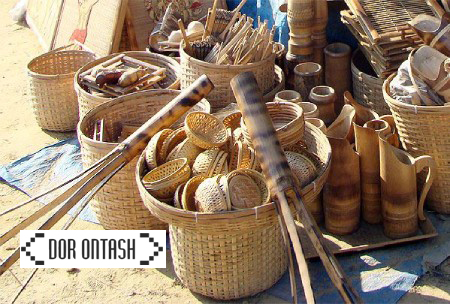
All kinds of Japanese handicrafts
The variety of crafts in Japan cannot be compared to any other developed country, and the most important of them are:
1-Moraq wood
Wood carving: with geometric designs and using natural and diverse wood colors and animal or industrial glues in the form of making boxes of various sizes and designs in Kanagawa.
2- Wood turning
It includes making all kinds of wooden trays and bowls, which were bought by even the cities of Osaka and Nagoya in the 19th century. Of course, it suffered a severe blow after the Second World War due to the spread of plastic containers, but recently it has regained its past prosperity due to people’s desire for natural materials. These containers are finished with a varnish, that is, with an impenetrable coating of natural gums. In addition to Nagano as the most famous production center of this product, its production is also common in Kumamoto and Aichi.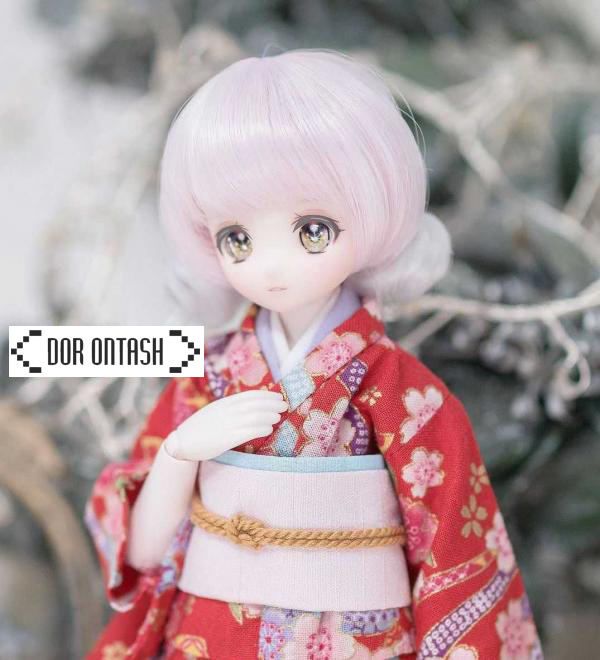
3- Ceramics and pottery
Kyoto ceramics: Kyoto should be considered a very rich treasure of all Japanese handicraft fields, whose artisans continue the past traditions from generation to generation, and one of them is the famous Kyo Mizu ceramics, whose glaze is made of ash obtained from the stems of Rice is provided.
Of course, it is more common to make different objects using a pottery wheel, but it is also possible to shape flowers by hand (hand formed), as well as the use of various molds to make the body of objects. Other important ceramic production centers in Japan and their characteristics are as follows:
Bizen Yaki: The number of ceramic makers in this city increased rapidly after World War II, so that now more than 2000 people are working in this field and some of them have earned the title of National Living Treasure.
About 800 people are engaged in the production of ceramics in this city.
Kutani Ceramics inspired by Chinese style are made in both old and new forms, which are in great demand in Europe. Kotani’s history in this field goes back to the middle of the 17th century.
Mino Yaki: The use of alkaline glaze on stone ceramic bodies since the 10th century has been the main feature of this city’s productions, and the traditional tea ceremony has been the main motivation for its development. Today, more than 150 people in this city are engaged in the production of tea service, vases, consumer and religious dishes with two methods of painting under the glaze and on the glaze.
In this way, Japan should be considered the Qibla of ceramic enthusiasts and this is an exceptional situation in a very advanced and industrialized country. The main reasons for this exception are the preservation of old traditions such as Ikebana and Chanoyu, as well as the existence of restaurants at different levels using traditional and handmade ceramic dishes.
4-Making a wooden box with metal decorations
According to the ancient Japanese tradition, every girl who goes to her husband’s house receives a decorated wooden box as part of her dowry, and for this reason, when a girl was born in the family, a Paulownia tree sapling was planted in the yard to provide the necessary support for the construction. The dowry fund for the daughter should be provided. The production center of this product is now in the city of Kamo in NIIGATA state.
Making products in the form of hammered copper: lead and tin alloy and knife making in the city of Sakai in Osaka Prefecture.
5-Silk weaving
Silk weaving: in Niigata Prefecture and silk printing in Tokyo.
The texture of the fabric known as: Bashofu, which is wheat-colored and is obtained from the fibers of the banana tree. Preparation of fibers and fabric is done by women alone on the island of Okinawa.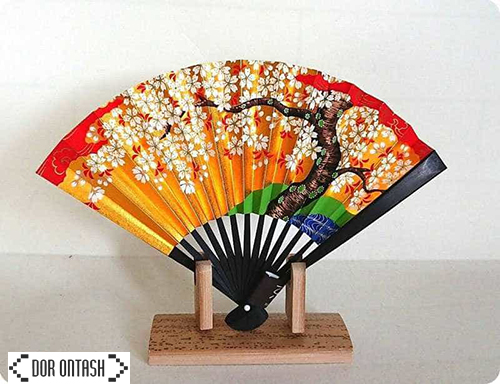
Japanese mat
Taking into account the artistic background of Japan and the progress it has made in various fields and handicrafts, it offers high-quality mats in the market.
The mat is made from the juxtaposition of threads that are made of plant fibers, these fibers stick to each other with the help of hands or simple tools. Of course, its production method can be different in different regions. The Japanese mat decorated with its various designs has created an eye-catching beauty.
One of the old traditions that the Japanese have preserved since the past is the use of mats for heating and different places. In fact, this culture has become one of the attractions for tourists who travel to this country.
This product is produced in different sizes from small to large, its use is also varied from under the plate to underlay, these dimensions have a great impact on the price of the mat. The acceptance of Japanese mats has led to the growth and increase of its sales.
Japanese bamboo sushi mat
The sushi mat is actually one of the tools that is widely used in Japanese cooking. Japanese bamboo sushi mat is one of the most popular types of mats.
This simple and efficient tool is made from bamboo wood. According to the thickness and dimensions of the bamboo wood that is used in the process of making this type of mat, it is divided into two types, thick and thin.
One of the most famous Japanese food and finger foods is sushi, which is served on special occasions in celebrations and parties. Their rolls can have different thicknesses based on the type of sushi. Bamboo sushi mat is a simple and inexpensive tool, but it is necessary to prepare this dish.
To roll sushi, place the sheets of algae on the bamboo sushi mat from the long side so that the rolling step can be done easily. The important thing is that the shiny side of the mat is facing down.
Click here to see examples of wicker products
Other fields of handicrafts
Although various fields of handicrafts are still observed in many cities and even villages in Japan, they are not seen in a diverse and concentrated manner like Kyoto, which is the old capital of the country and its largest cultural center. The most common handicrafts in Kyoto are: needlework, fabric dyeing (Tie & Dye, such as Yazd’s fabric), embroidering on steel (inlaid work), making wooden objects in the form of carvings, batik printing in the form of paintings and The use of rice paste (instead of wax), which is known as Yuzen, the printing of pen cloth and its carving mold, and finally, the production of the most diverse and beautiful ceramics in Japan takes place in this city.
After Kyoto, Tokyo should be mentioned as the largest center for the production of handicraft products, where doll making with local clothes, silver making, mat weaving, and umbrella making (sun umbrellas) are among the common fields there. Deer skin painting: This method was brought to Japan from India and is called Koshu inden. Of course, in India they use tiger skin for this. Fabric dyeing and printing in Kyoto: They use rice paste to reserve parts of fabric during dyeing. The designs used on this type of production include birds, flowers, natural landscapes and emperor’s palaces.
The bodies responsible for Japanese handicrafts
1- Kyoto Handicrafts Center.
2- Traditional Japanese handicrafts center.
3- Japan Handicrafts Assembly
4- Japan Handicrafts Council.
Among the above organizations, only the Japan Handicrafts Council is a trade organization and is composed of professional associations of artists and craftsmen (legal entities), and real people cannot become its members. This institution is responsible for representing Japanese handicrafts in relevant international forums such as UNESCO and the World Handicrafts Council.
The main members of the Japan Crafts Council are:
– Japan Craft Designers Association.
– Japan Jewelry Designers Association.
– Japan Handcrafted Glass Association.
– Association of Japanese enamel artists.
Educational institutions related to handicrafts in Japan are as follows:
– Tokyo University of the Arts.
Tama Art University.
Musashino Faculty of Arts.
– Nippon University (Japan)
– Kyoto Municipal College.
Kanazawa College of Art.
Contact Khurshidak
Basho-fu (Basho-fu)
Basho-fu is a type of handwoven fabric that was first made by the Ryukyu royal family, exclusively in Kijuka, a part of Wee Village in Ogimi Prefecture, Okinawa Prefecture. The warp and weft of this fabric is obtained from itobasho fibers, a type of wild banana that is picked, spun, and turned into thread all by hand. Recently, the production of Basho-Fu paper has been stopped due to the lack of Otobasho stocks as well as the spinners of this special plant. It takes about three months to plant and harvest Otobasho, and to weave a full kimono from Otobasho, it is necessary to pick Otobasho from twenty banana trees.
Taira Toshiko (Taira Toshiko), the head of the social institution for the protection of basho-fu in Japan, is one of the few people who still makes clothes from this fabric. Visitors to Okinawa City can visit the Ogimi area of this city and participate in training sessions on how to make Bashofu clothes.
To learn about the history of sword making in Japan, you can visit the Seki City Traditional Sword Making Museum. In this museum, there are different galleries where a variety of swords and blades are placed that visitors can view. On January 2 every year, a ceremony is held in this museum; This ceremony is called Uchizome-Shiki and the participants can see the sword makers in their official clothes making different swords.

